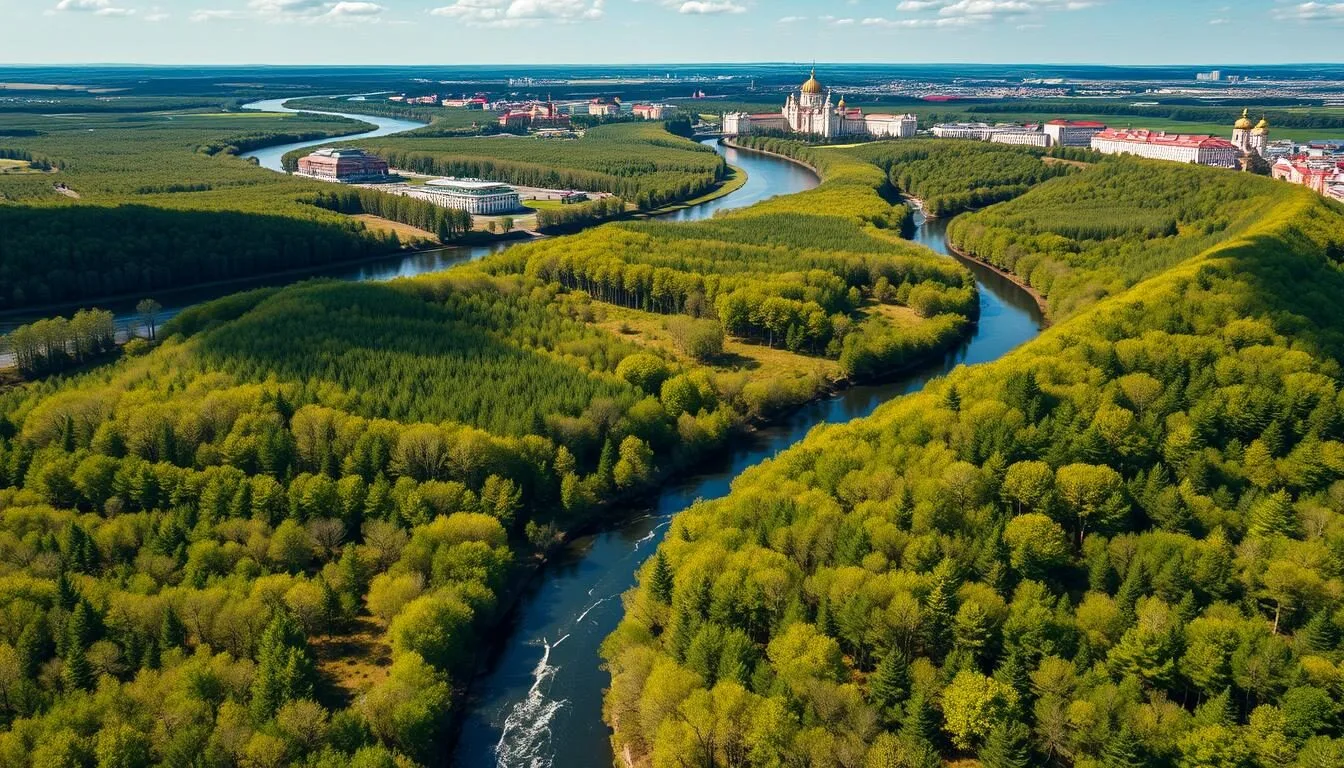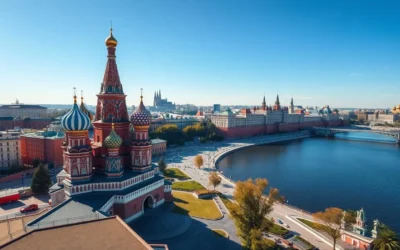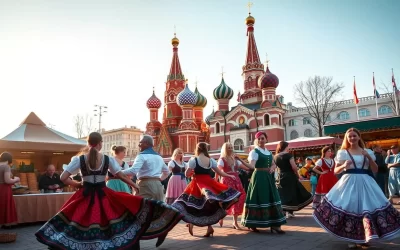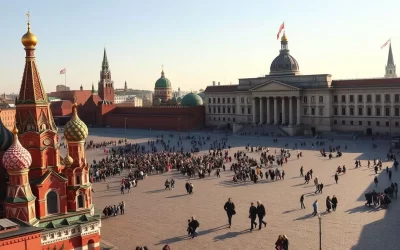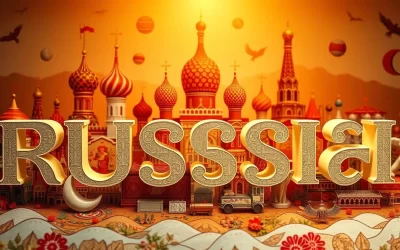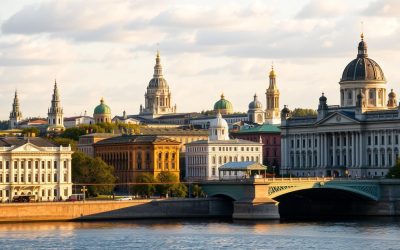✓ Accommodations ✓ Flights ✓ Rental Cars
Did you know that Moscow Oblast houses over 1,500 cultural and historical monuments, yet most international travelers never venture beyond the Russian capital? This ring-shaped region surrounding Moscow city offers a treasure trove of experiences from ancient kremlins to serene nature reserves, all within easy reach of the bustling metropolis. While millions flock to Red Square annually, the surrounding Moscow Oblast remains one of Russia’s best-kept secrets for authentic cultural immersion.
Getting to Moscow Oblast, Russia
Moscow Oblast encircles the capital city and doesn’t have its own international airport. Most travelers arrive via one of Moscow’s three international airports: Sheremetyevo (SVO), Domodedovo (DME), or Vnukovo (VKO). From there, you can reach various destinations within Moscow Oblast using public transportation or rental cars.
Plan Your Journey to Moscow Oblast
Start your adventure by finding the best flight deals to Moscow’s airports.
The extensive suburban train network (elektrichkas) connects Moscow to major towns in the oblast, making day trips convenient and affordable. For destinations further from train stations, combining trains with local buses often works best. Alternatively, hiring a car gives you maximum flexibility to explore the region’s hidden gems at your own pace.
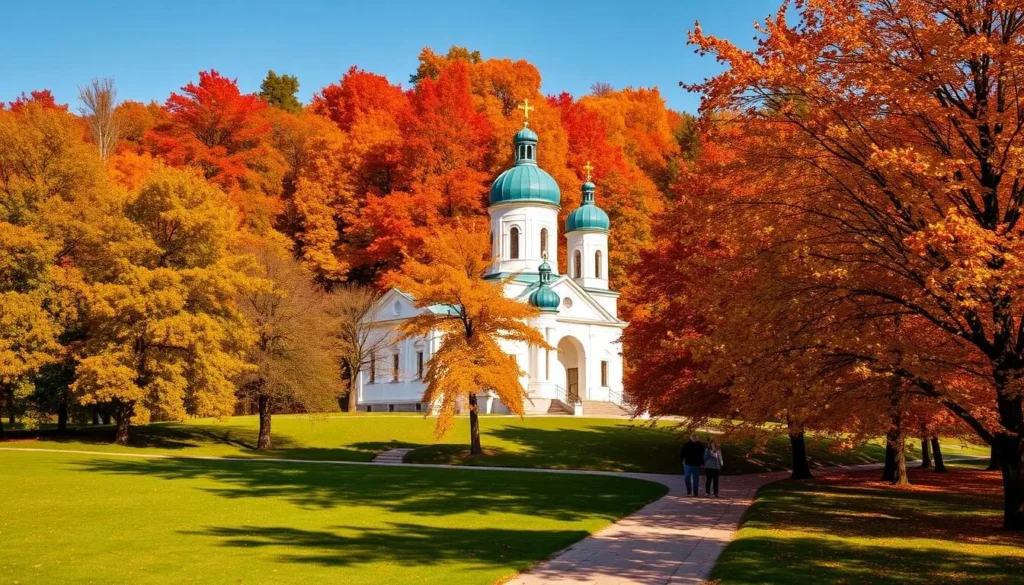
Best Time to Visit Moscow Oblast
The ideal time to visit Moscow Oblast is during late spring (May-June) and early autumn (September). These shoulder seasons offer pleasant temperatures between 15-25°C (59-77°F), fewer tourists, and either blooming landscapes or stunning fall colors. Summer (July-August) brings warmer weather perfect for outdoor activities, though popular sites can get crowded with domestic tourists.
Summer (June-August)
Long daylight hours (up to 17 hours) make summer ideal for maximizing sightseeing. Temperatures typically range from 18-30°C (64-86°F), perfect for exploring outdoor attractions and enjoying festivals in towns throughout the oblast. This is peak season for Russian domestic tourism.
Winter (December-February)
For a truly authentic Russian experience, winter transforms Moscow Oblast into a snow-covered wonderland. Temperatures drop to -5 to -15°C (23 to 5°F), but attractions are virtually tourist-free. Many estates and parks offer special winter activities like troika rides and ice skating.
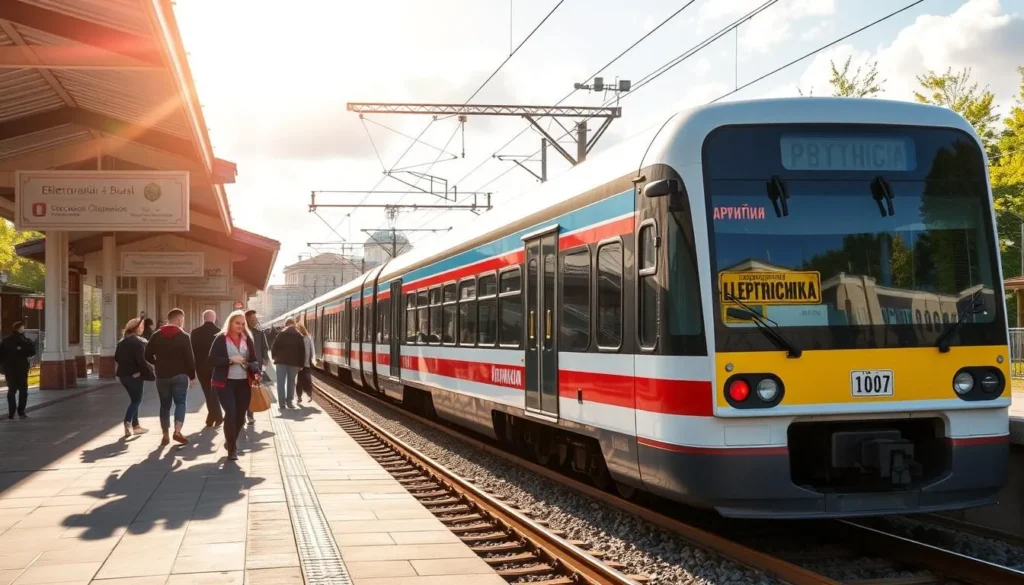
Getting Around Moscow Oblast
Moscow Oblast’s transportation network makes exploring the region relatively straightforward, though some advance planning is recommended, especially if you don’t speak Russian.
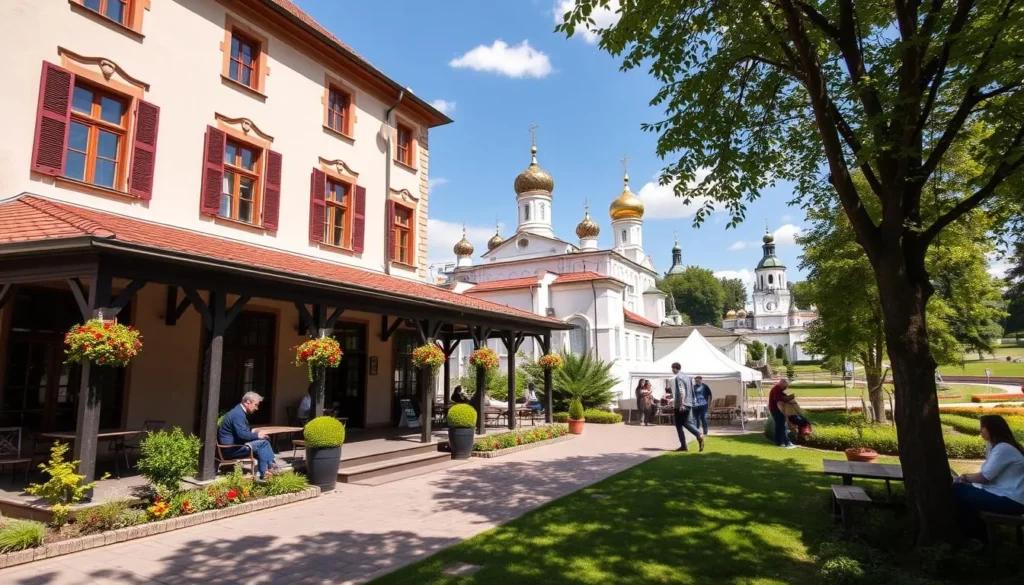
Where to Stay in Moscow Oblast
While many visitors opt for day trips from Moscow city, staying overnight in Moscow Oblast towns offers a more immersive experience. The region offers accommodations ranging from international hotel chains to charming guesthouses and rural cottages.
Sergiev Posad
As the most popular destination in Moscow Oblast, Sergiev Posad offers the widest range of accommodations. Stay near the Trinity Lavra monastery for easy access to the main attraction. Hotel Stary Gorod and Boutique-Hotel Konny Dvor offer comfortable rooms with historic atmosphere.
Kolomna
This historic town has several boutique hotels in restored merchant houses. 40th Meridian Arbat and Dom Samovara offer unique accommodations with traditional Russian character. The compact historic center makes any centrally-located hotel convenient for sightseeing.
Zvenigorod
Known for its fresh air and natural surroundings, Zvenigorod offers several spa hotels and health resorts. Zvenigorod Resort and Yamskaya Hotel provide comfortable bases for exploring this charming small town and its surrounding nature reserves.
Find Your Perfect Stay in Moscow Oblast
From historic boutique hotels to modern accommodations, find the perfect base for your exploration.
Top Attractions in Moscow Oblast
Moscow Oblast offers a diverse range of attractions from UNESCO World Heritage sites to natural wonders. Here are the must-visit destinations that showcase the region’s rich history and culture.
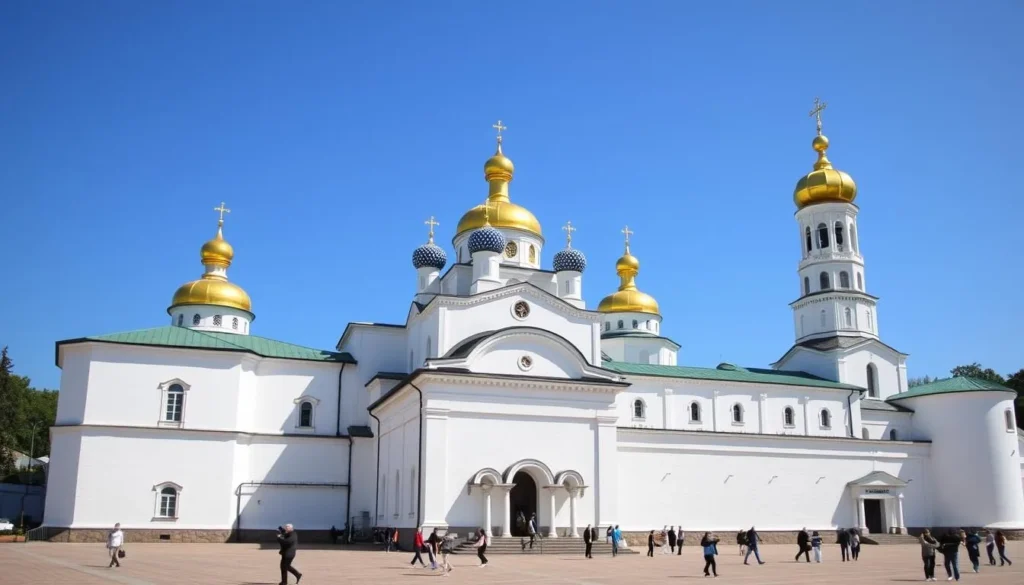
Sergiev Posad: The Spiritual Heart
The crown jewel of Moscow Oblast and the only Golden Ring city within the region, Sergiev Posad is home to the Trinity Lavra of St. Sergius, a UNESCO World Heritage site. This functioning monastery, founded in 1337, remains Russia’s most important spiritual center with stunning architecture spanning centuries.
Experience Sergiev Posad with Expert Guides
Discover the rich history and spiritual significance of Russia’s holiest monastery.
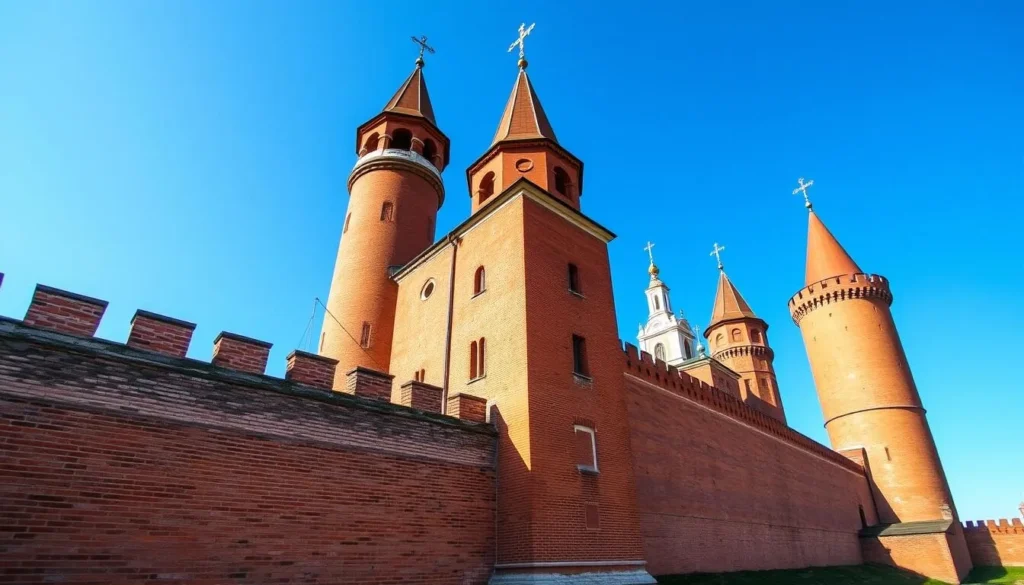
Kolomna: A Living Museum
Located where the Moskva River meets the Oka, Kolomna preserves its medieval character with remarkable authenticity. The town’s kremlin (fortress) dates back to the 16th century, and the surrounding streets are lined with colorful merchant houses and churches.
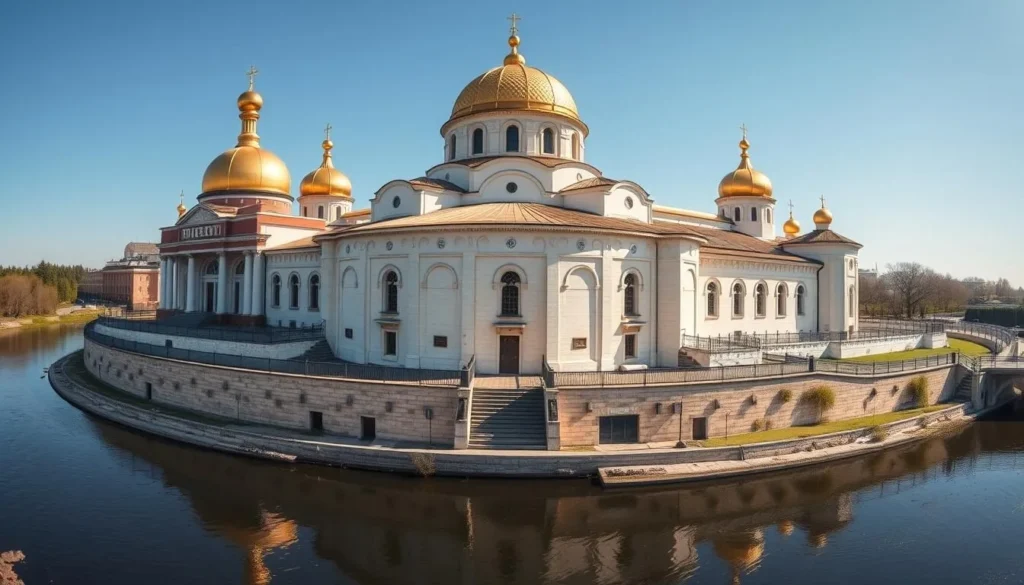
New Jerusalem Monastery in Istra
This remarkable 17th-century monastery was designed to recreate the Holy Land on Russian soil. Patriarch Nikon ordered the Istra River to be renamed the Jordan and built a rotunda modeled after Jerusalem’s Church of the Holy Sepulchre. Recently restored to its former glory, the monastery complex now houses an excellent museum of Russian art and history.
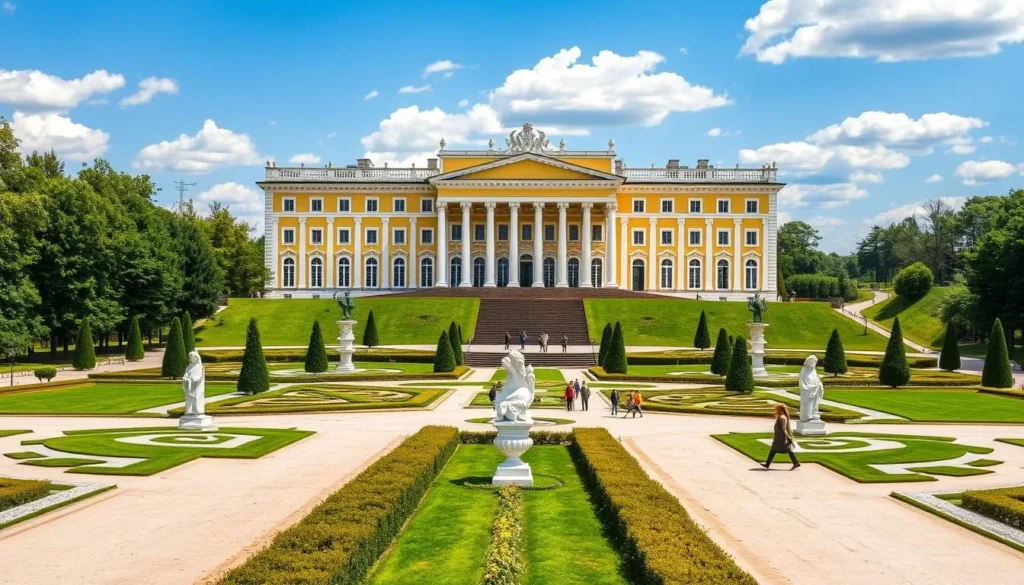
Historic Estates of Moscow Oblast
The Russian nobility built magnificent country estates throughout Moscow Oblast, many of which are now museums offering glimpses into aristocratic life from the 18th and 19th centuries.
Arkhangelskoye Estate: The Russian Versailles
Often called “the Russian Versailles,” this perfectly preserved estate features a neoclassical palace surrounded by formal French gardens. Once owned by Prince Yusupov, the estate houses an impressive collection of European art and furniture. The palace theater still hosts classical music concerts during summer months.
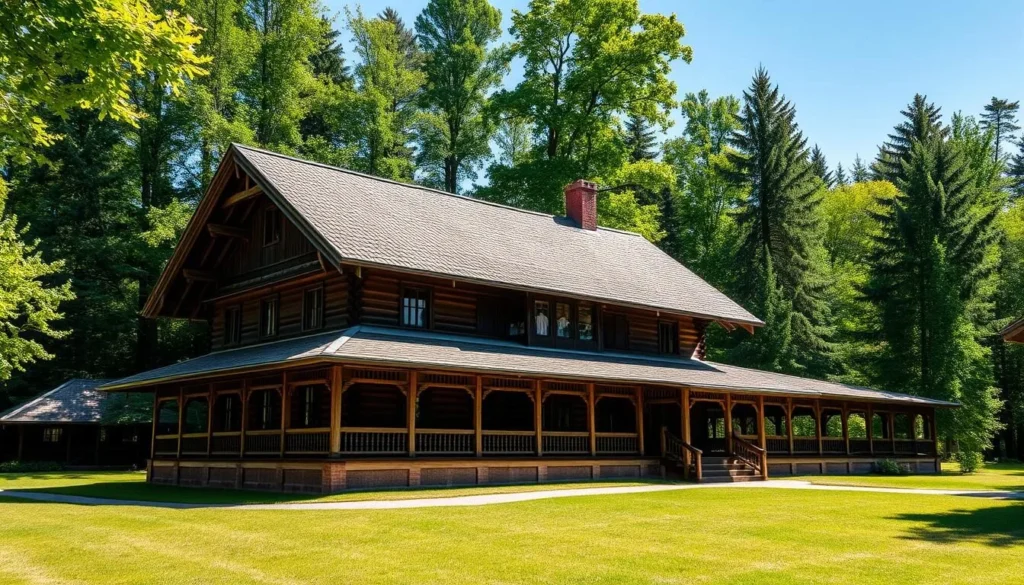
Abramtsevo: Artists’ Colony
This charming wooden estate became a famous artists’ colony in the late 19th century, hosting luminaries like Repin, Vasnetsov, and Vrubel. The estate preserves their studios and artwork, including the fairytale-like Church of the Savior Not Made by Human Hands, designed collectively by the colony’s artists in the distinctive Russian Revival style.
Melikhovo: Chekhov’s Country Home
Literary enthusiasts shouldn’t miss Anton Chekhov’s estate in Melikhovo, where the famous playwright wrote some of his most celebrated works including “The Seagull.” The modest main house and garden are preserved as they were during Chekhov’s residence from 1892 to 1899, offering intimate insights into the writer’s life and creative process.
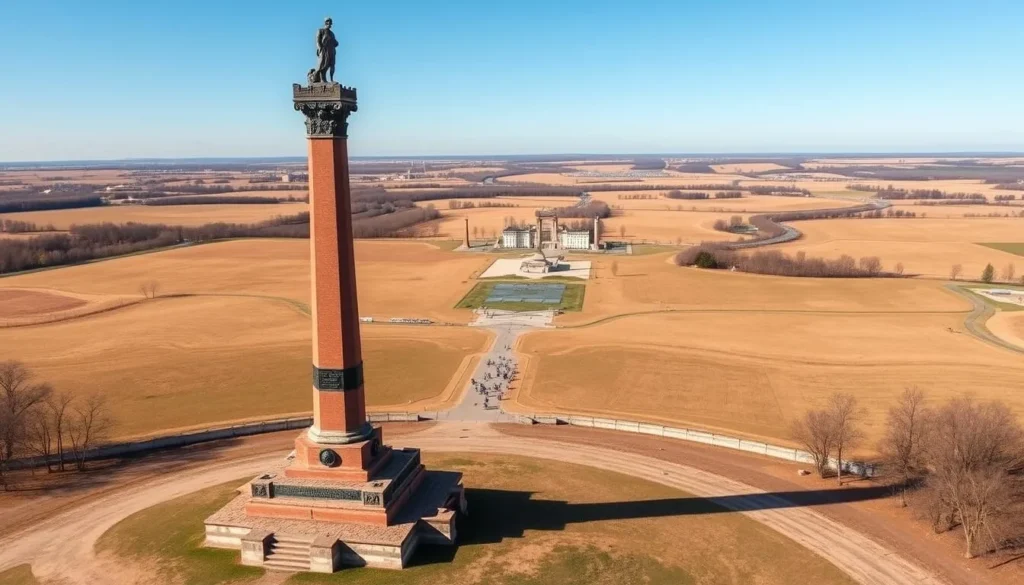
Military History Sites
Moscow Oblast has been the stage for pivotal moments in Russian military history, with several significant battlefields and museums dedicated to preserving this legacy.
Borodino Battlefield
The site of the epic 1812 battle between Napoleon’s Grande Armée and Russian forces under General Kutuzov is now an expansive memorial complex. Over 300 monuments dot the rolling countryside, marking key positions and commemorating the fallen. The excellent museum provides context through dioramas, weapons, uniforms, and maps. Visit during the annual September reenactment to see hundreds of participants recreate the famous battle in period uniforms.
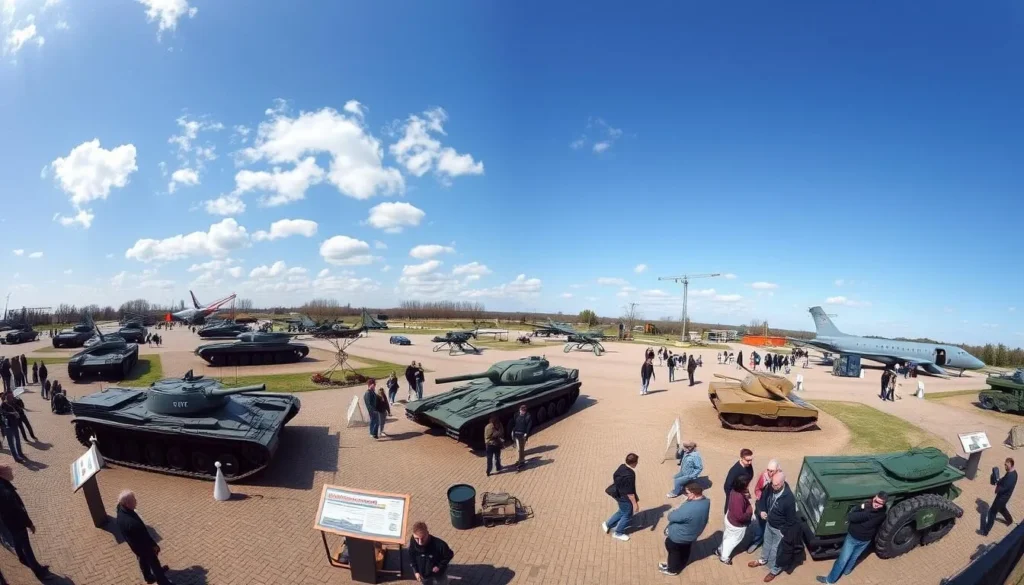
Patriot Park in Kubinka
Often dubbed “Military Disneyland,” this massive complex showcases Russia’s military might from historical to cutting-edge. The park features extensive indoor and outdoor exhibitions of tanks, aircraft, artillery, and other military equipment. Visitors can try military simulators, watch demonstration shows, and even sample army rations at themed restaurants. The park’s Tank Museum houses the world’s largest collection of armored vehicles, including rare German, Soviet, and Allied tanks from WWII.
Experience Russian Military History
Discover the fascinating military heritage of Moscow Oblast with expert guides.
Kubinka Aviation Museum
Aviation enthusiasts will appreciate this impressive collection of Soviet and Russian aircraft. Located at a functioning air base, the museum displays everything from early Soviet designs to modern fighters. The outdoor exhibition area allows visitors to get remarkably close to legendary aircraft like the MiG-29 and Su-27. Special events throughout the year sometimes include flight demonstrations.
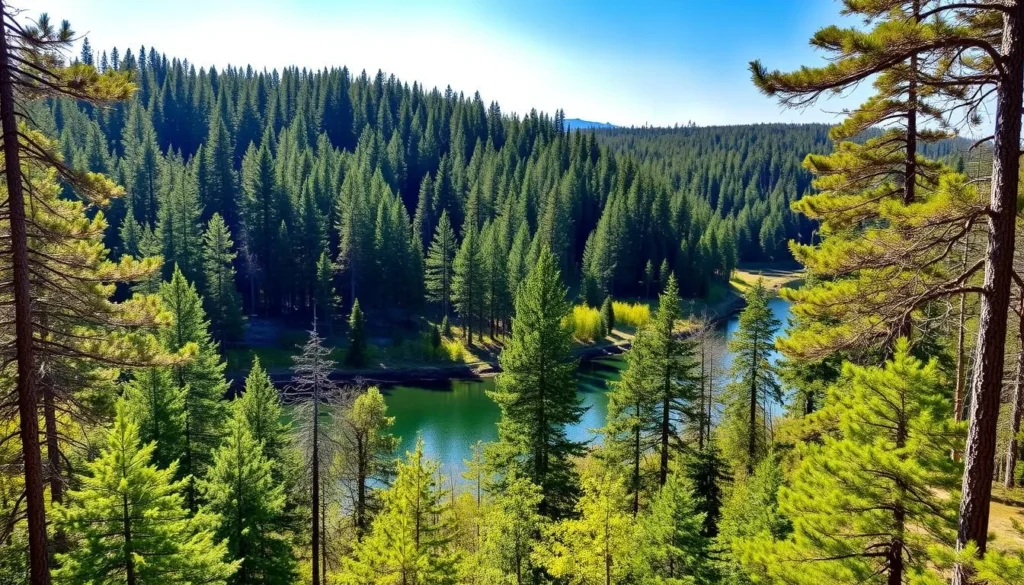
Natural Attractions in Moscow Oblast
Despite its proximity to the metropolis, Moscow Oblast offers surprising natural diversity with forests, rivers, and protected areas perfect for outdoor enthusiasts.
Losiny Ostrov National Park
As one of Russia’s oldest national parks, Losiny Ostrov (Elk Island) preserves a remarkable forest ecosystem right at Moscow’s doorstep. The park’s 116 square kilometers contain diverse habitats from pine forests to wetlands, home to elk, wild boar, beaver, and numerous bird species. Well-maintained trails make it perfect for hiking, cycling, and cross-country skiing in winter. The Elk Biological Station offers opportunities to see these majestic animals up close.
Prioksko-Terrasny Nature Reserve
This UNESCO Biosphere Reserve is famous for its European bison breeding program, which helped save these magnificent animals from extinction. Visitors can tour the bison enclosure with guides to observe the herd. The reserve also protects rare plant species and diverse wildlife in its pristine forest ecosystem. Educational trails with informative signs make it perfect for nature lovers of all ages.
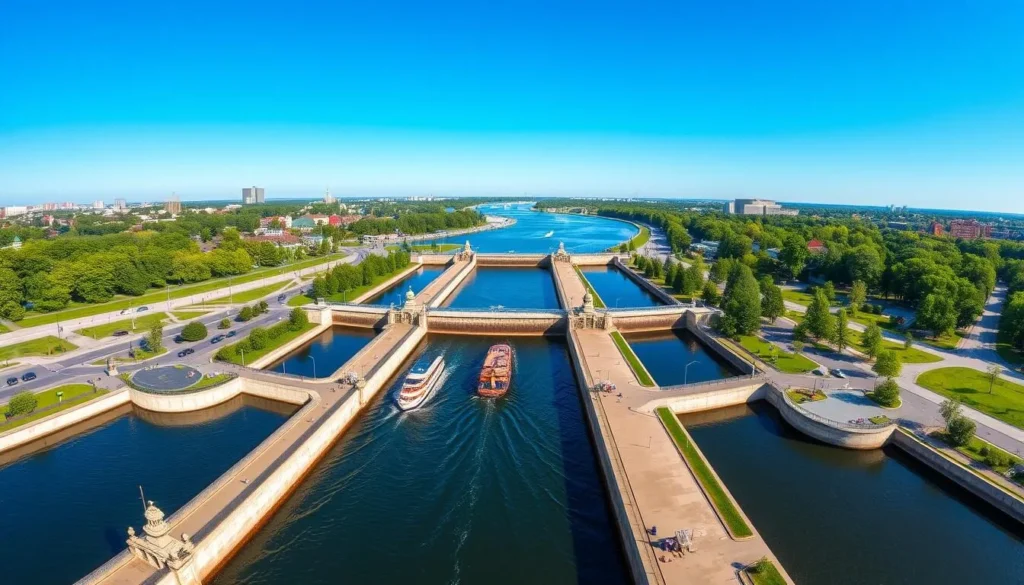
Moscow Canal
This engineering marvel connects the Moscow and Volga rivers through a series of locks and reservoirs. Beyond its practical purpose, the canal has become a recreational zone with beaches, fishing spots, and boating opportunities. The impressive Soviet-era architecture of the locks and pumping stations reflects the monumental style of the 1930s. Summer boat tours offer a unique perspective on Moscow Oblast’s landscape.
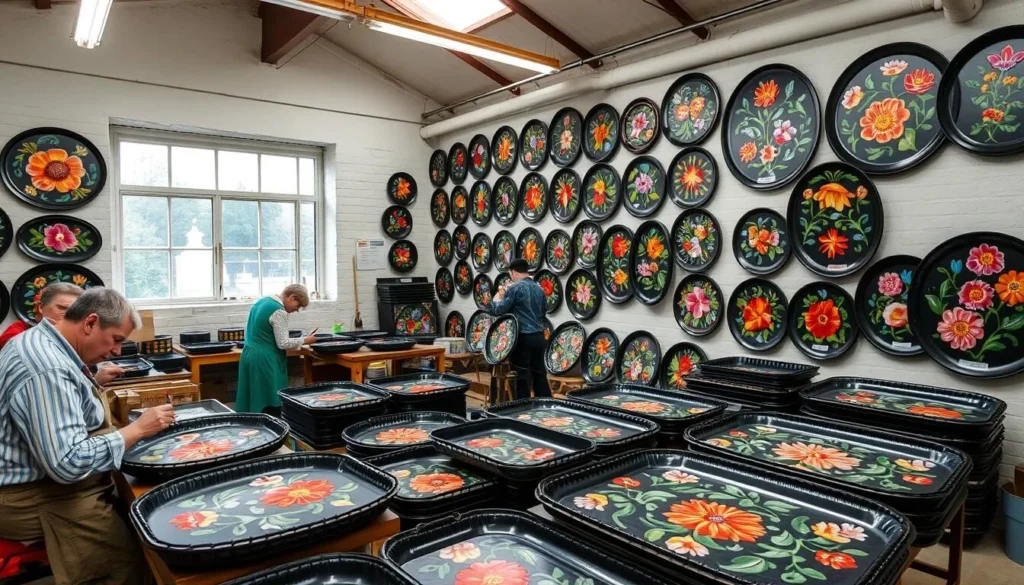
Cultural Experiences and Crafts
Moscow Oblast has been a center of traditional Russian crafts for centuries, with several historic production centers still active today.
Zhostovo Factory
The art of painting metal trays with vibrant floral designs has been practiced in the village of Zhostovo since the early 19th century. Visitors to the factory can tour the workshop to see artists creating these distinctive trays, each a unique handcrafted masterpiece. The museum displays historical pieces showing the evolution of this distinctive Russian art form. Master classes offer the opportunity to try your hand at this traditional craft.
Gzhel Porcelain
The distinctive blue and white ceramics of Gzhel have become iconic symbols of Russian craftsmanship. The Gzhel factory and museum showcase the production process from clay preparation to the final hand-painted pieces. Visitors can watch artisans apply the cobalt blue designs that have made this style famous worldwide. The factory store offers authentic pieces directly from the source.
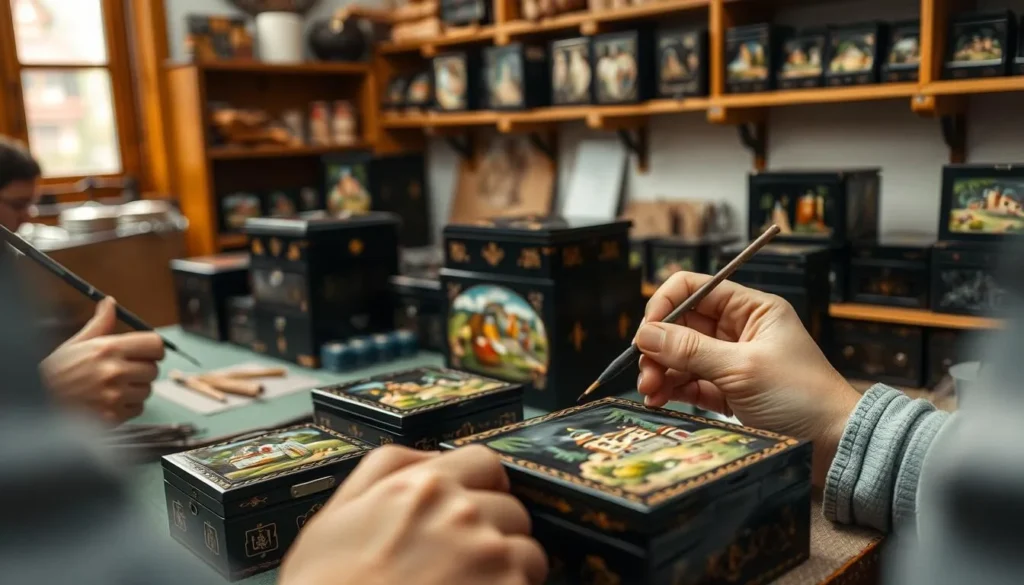
Fedoskino Miniature Painting
The village of Fedoskino is the birthplace of Russian lacquer miniature painting, a tradition dating back to the late 18th century. The Fedoskino Factory continues to produce exquisite hand-painted lacquer boxes featuring detailed scenes from fairy tales, landscapes, and historical events. The local museum explains the painstaking process involving multiple layers of paint and gold leaf. Serious collectors can purchase museum-quality pieces directly from master artists.
Discover Russian Folk Arts
Experience traditional Russian crafts with hands-on workshops and expert demonstrations.

Culinary Experiences in Moscow Oblast
The region offers distinctive local specialties and food-related attractions that provide delicious insights into Russian culinary traditions.
Kolomna Pastila
This unique Russian confection made from whipped apple puree and honey has been Kolomna’s specialty since the 14th century. The Museum of Pastila offers fascinating demonstrations of traditional production methods and tastings of various flavors. The adjacent café serves pastila alongside traditional Russian tea. Cooking masterclasses allow visitors to try making this delicate sweet themselves.
Zvenigorod Bread Museum
Bread holds special significance in Russian culture, and this unique museum explores its history and production. Interactive exhibits demonstrate traditional baking methods, with visitors invited to participate in the process. The museum bakery produces excellent artisanal loaves available for purchase, including the distinctive borodinsky black bread flavored with coriander.
Local Restaurants and Markets
Throughout Moscow Oblast, local restaurants serve authentic Russian cuisine often featuring regional specialties and seasonal ingredients. Farm-to-table concepts have gained popularity, with several restaurants maintaining their own gardens and sourcing from nearby producers. Weekend farmers’ markets in towns like Sergiev Posad and Kolomna offer opportunities to sample and purchase local products directly from producers.
Practical Tips for Visiting Moscow Oblast
These essential tips will help you navigate Moscow Oblast smoothly and make the most of your visit to this fascinating region.
Language
While English signage has improved in tourist areas, Russian remains the primary language throughout Moscow Oblast. Learning basic phrases and downloading a translation app will be helpful. Consider hiring guides for major attractions like Sergiev Posad or Kolomna to enhance your understanding of these historic sites.
Transportation
The Yandex.Go app is invaluable for navigating public transportation and ordering taxis. Purchase the Troika card in Moscow for use on suburban trains and buses. Train schedules can be checked through the Tutu.ru website or Russian Railways app, both available in English.
Etiquette
When visiting monasteries and churches, women should cover their heads with scarves and wear skirts that cover the knees. Men should remove hats and wear long pants. Photography may be restricted in some religious sites and museums, always check before taking pictures.
Is Moscow Oblast safe for tourists?
Moscow Oblast is generally very safe for tourists. Standard travel precautions apply – keep valuables secure, be aware of your surroundings in crowded areas, and avoid isolated places after dark. The most common issues travelers face are language barriers rather than safety concerns.
Do I need a visa to visit Russia?
Most foreign nationals require a visa to visit Russia. Tourist visas typically require an invitation from a Russian hotel or tour operator. Apply at least one month before your planned trip through the Russian consulate in your country or an authorized visa center. Check the latest requirements as they can change.
What’s the best way to handle money in Moscow Oblast?
While major tourist sites and hotels accept credit cards, smaller establishments and transportation often require cash. ATMs are widely available in towns throughout Moscow Oblast. Notify your bank of your travel plans to prevent cards from being blocked. Having some cash rubles is always advisable, especially for small purchases and transportation.

Suggested Itineraries for Moscow Oblast
Whether you have just a day or a full week to explore, these itineraries will help you make the most of your time in Moscow Oblast.
Day Trip from Moscow: Sergiev Posad
For those with limited time, Sergiev Posad offers the perfect day trip from Moscow. Take an early elektrichka train from Moscow’s Yaroslavsky Station (journey time approximately 1.5 hours). Spend the morning exploring the Trinity Lavra monastery complex with its magnificent cathedrals and museums. After lunch at a local restaurant serving traditional Russian cuisine, visit the Toy Museum to see the famous matryoshka dolls. Return to Moscow in the evening.
Three-Day Golden Ring Experience
Extend your exploration with this three-day itinerary covering key Golden Ring destinations in and near Moscow Oblast:
Week-Long Moscow Oblast Exploration
This comprehensive itinerary covers the region’s highlights at a comfortable pace:
Create Your Perfect Moscow Oblast Adventure
Let our travel experts help you plan a customized itinerary based on your interests.
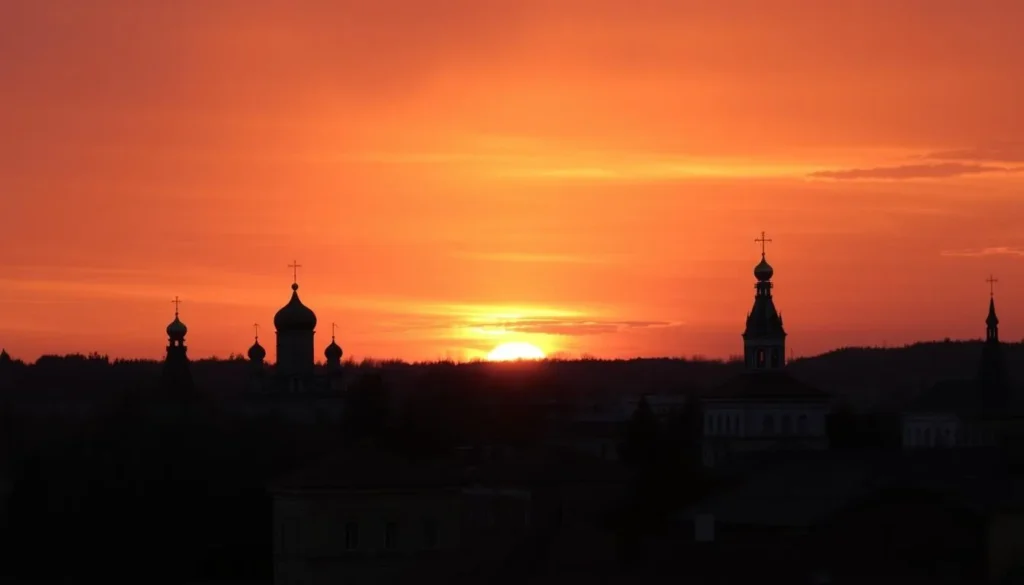
Experience the Hidden Russia in Moscow Oblast
Moscow Oblast offers travelers a perfect blend of Russia’s spiritual heritage, artistic traditions, and natural beauty—all within easy reach of the capital. From the golden domes of Sergiev Posad to the medieval walls of Kolomna, from aristocratic estates to pristine forests, this often-overlooked region rewards visitors with authentic experiences far from the tourist crowds. By venturing beyond Moscow city limits, you’ll discover the heart and soul of Russia through its historic towns, ancient monasteries, and the warm hospitality of its people. Whether you’re a history enthusiast, nature lover, or cultural explorer, Moscow Oblast’s diverse attractions promise unforgettable memories of the real Russia.
—
The above is subject to change.
Check back often to TRAVEL.COM for the latest travel tips and deals.
